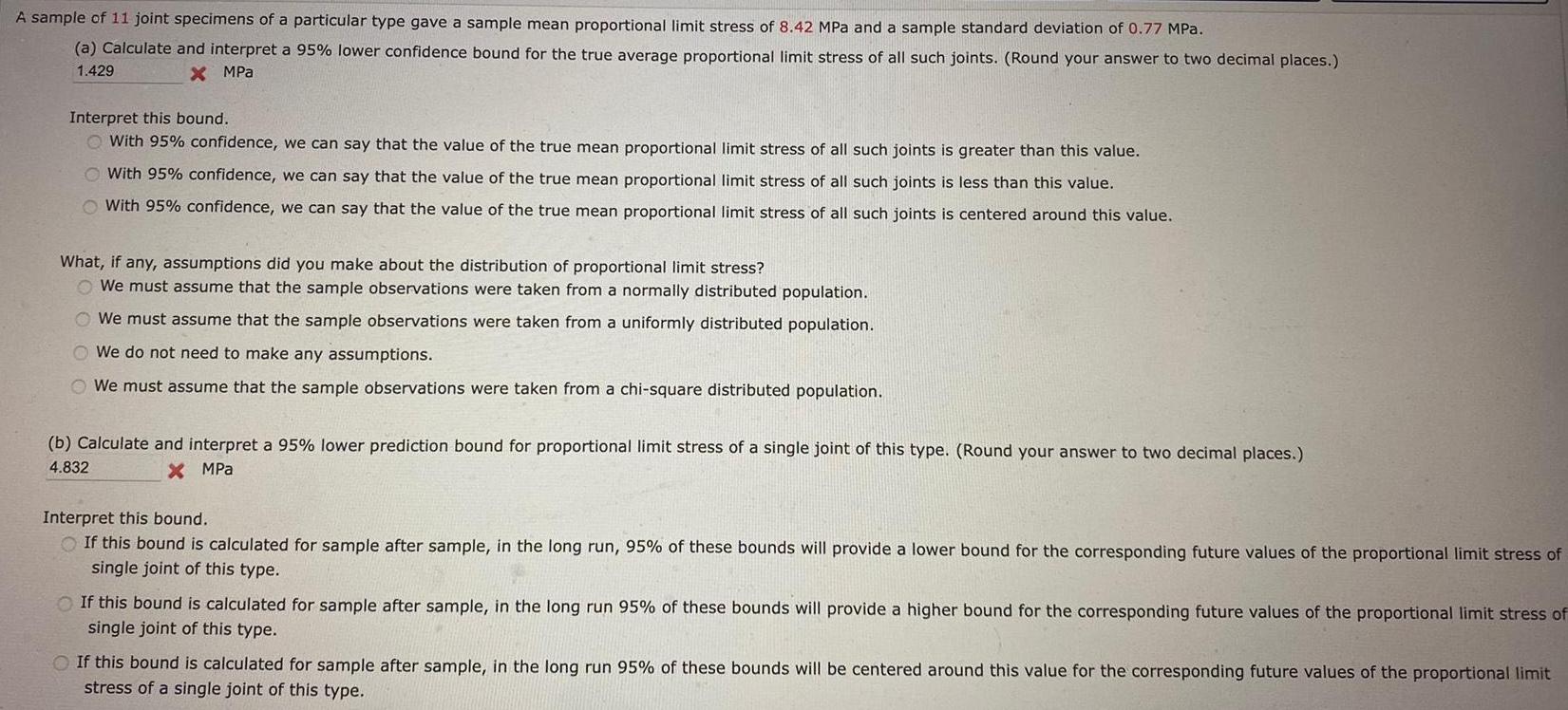A sample of 11 joint specimens of a particular type gave a
Last updated: 6/30/2023

A sample of 11 joint specimens of a particular type gave a sample mean proportional limit stress of 8 42 MPa and a sample standard deviation of 0 77 MPa a Calculate and interpret a 95 lower confidence bound for the true average proportional limit stress of all such joints Round your answer to two decimal places X MPa 1 429 Interpret this bound O With 95 confidence we can say that the value of the true mean proportional limit stress of all such joints is greater than this value With 95 confidence we can say that the value of the true mean proportional limit stress of all such joints is less than this value O With 95 confidence we can say that the value of the true mean proportional limit stress of all such joints is centered around this value What if any assumptions did you make about the distribution of proportional limit stress We must assume that the sample observations were taken from a normally distributed population We must assume that the sample observations were taken from a uniformly distributed population We do not need to make any assumptions We must assume that the sample observations were taken from a chi square distributed population b Calculate and interpret a 95 lower prediction bound for proportional limit stress of a single joint of this type Round your answer to two decimal places X MPa 4 832 Interpret this bound If this bound is calculated for sample after sample in the long run 95 of these bounds will provide a lower bound for the corresponding future values of the proportional limit stress of single joint of this type If this bound is calculated for sample after sample in the long run 95 of these bounds will provide a higher bound for the corresponding future values of the proportional limit stress of single joint of this type If this bound is calculated for sample after sample in the long run 95 of these bounds will be centered around this value for the corresponding future values of the proportional limit stress of a single joint of this type